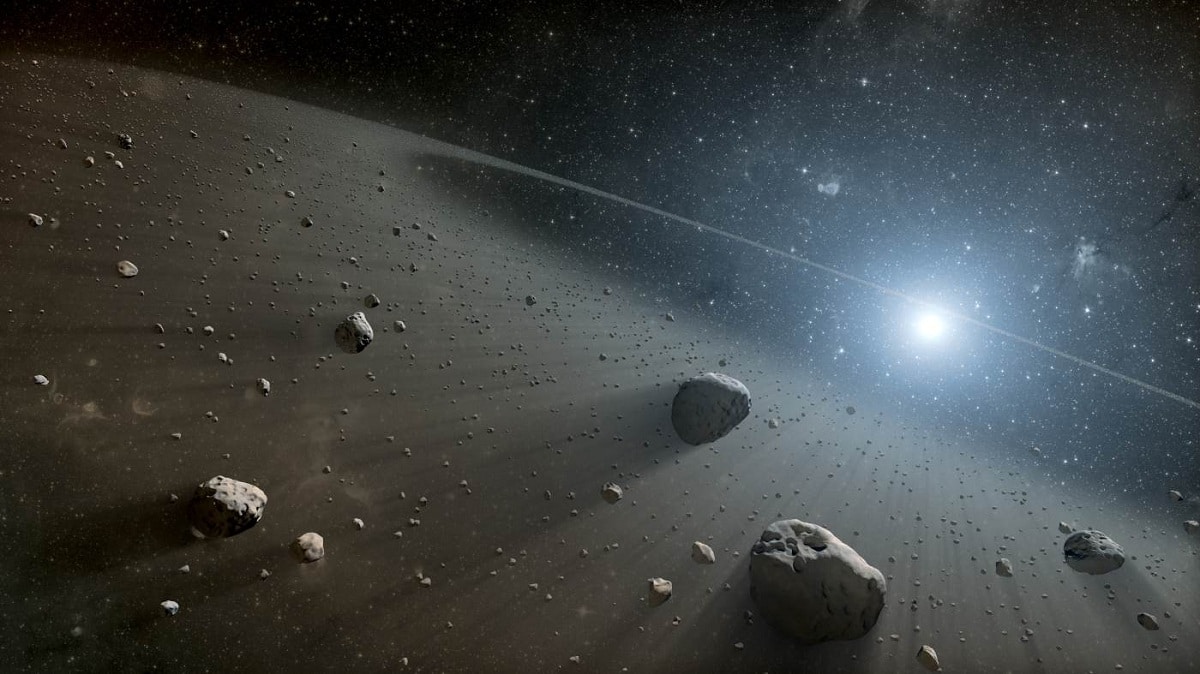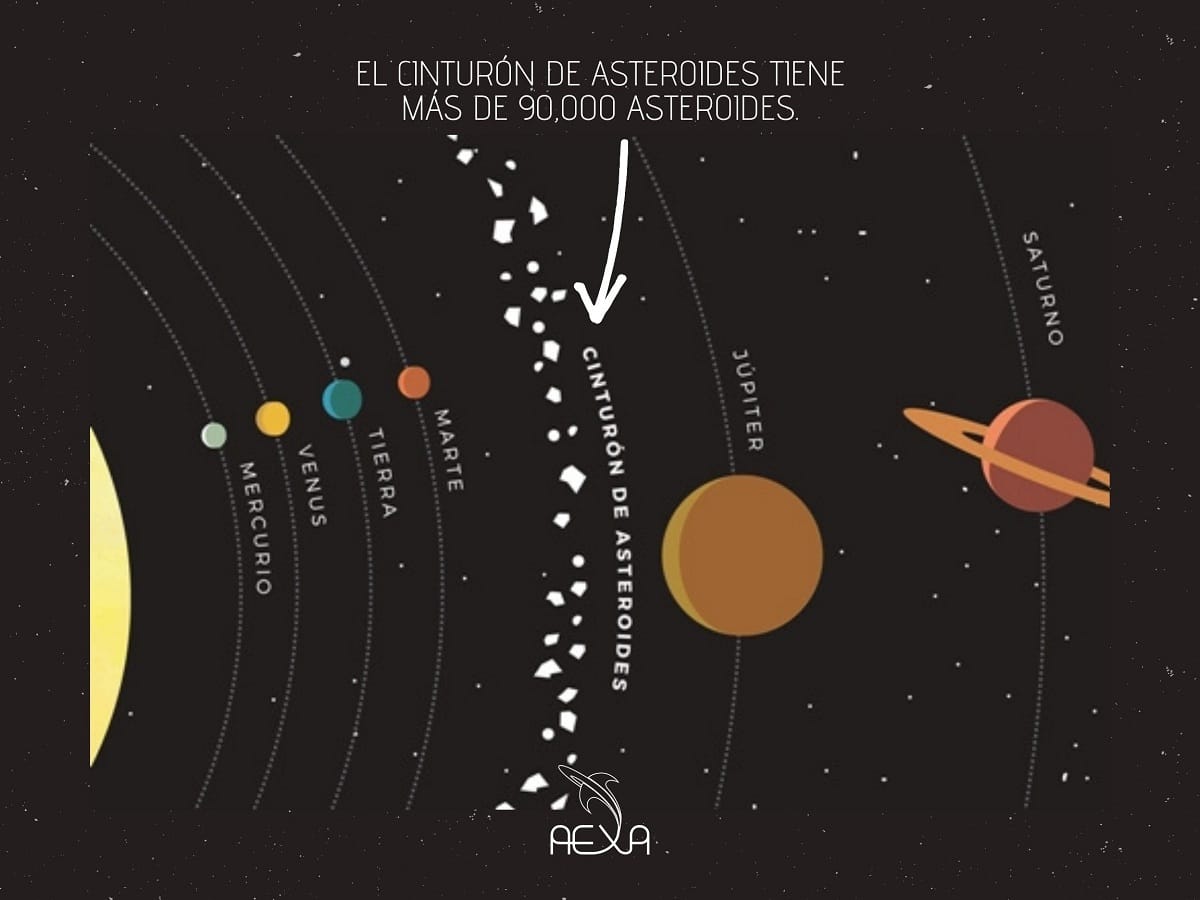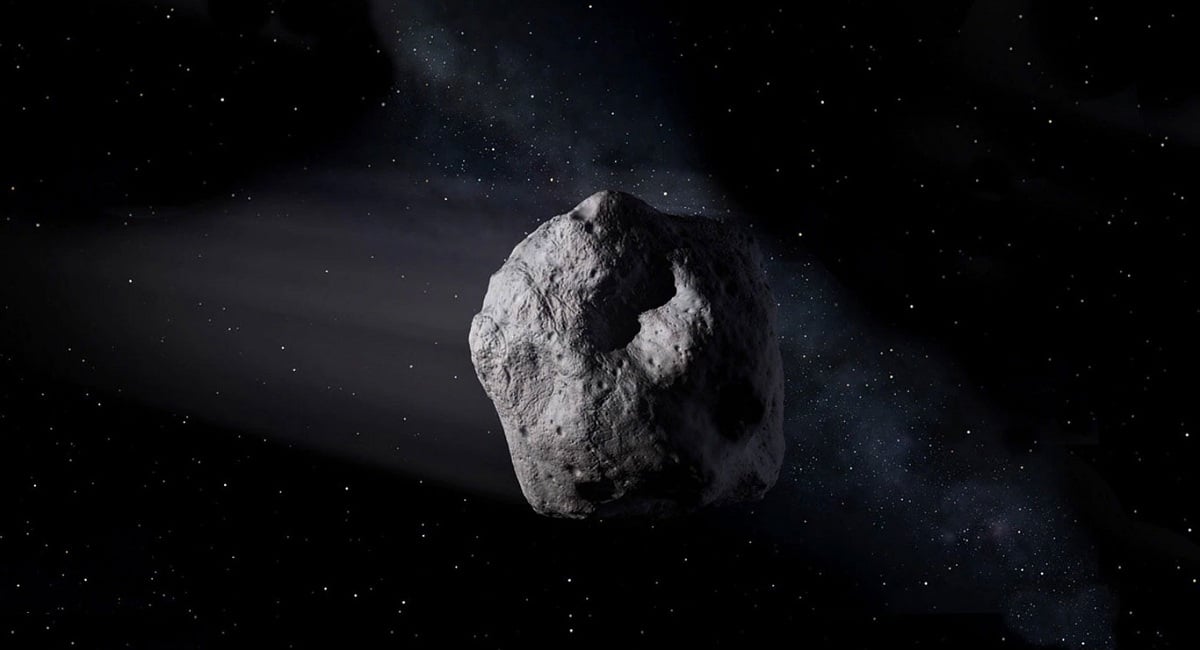
Asteroids are nothing more than rocky celestial bodies that orbit the Sun. Although they are not the same size as planets, they have similar orbits. Many asteroids have been found in the orbit of our solar system. Most of them form the asteroid belt as we know. This area is between the orbits of Mars and Jupiter. As with planets, their orbits are elliptical.
In this article we are going to tell you everything you need to know about the asteroid belt, its characteristics and importance.
Key features

It is called the asteroid belt or main belt and is located in the region of our solar system between the orbits of Jupiter and Mars, which separates the inner planets from the outer planets. It is characterized by a large number of rocky celestial bodies of irregular shapes and different sizes, called asteroids, and accompanied by the dwarf planet Ceres.
The name of the main belt is to distinguish it from other space objects in the solar system, such as the Kuiper Belt behind the orbit of Neptune or as the Oort Cloud, located at the extreme edge of the solar system, almost a light year away from the sun.
The asteroid belt is made up of millions of celestial bodies, which can be divided into three types: carbonaceous (type C), silicate (type S) and metallic (type M). Currently there are five largest celestial bodies: Pallas, Vesta, Cigia, Juno and the largest celestial body: Ceres, which is classified as a dwarf planet with a diameter of 950 kilometers. These objects represent more than half the mass of the main belt, equivalent to only 4% of the moon's mass (0,06% of the earth's mass).
Although they are shown very close in the images of the solar system, forming a dense cloud, the truth is that these asteroids are so far apart that it is difficult to navigate in that space and collide with one of them. On the contrary, due to their usual orbital oscillations, they approach the orbit of Jupiter. It is this planet that, with its gravity, causes instability in asteroids.
Presence of the asteroid belt

Asteroids are not only found in this belt, but also in the trajectories of other planets. This means that this rocky object has the same path around the sun, but there is nothing to worry about. You might think that if an asteroid is in the same orbit as our planet, it can collide and cause a disaster. This is not the case. No need to worry about whether or not they will crash.
Asteroids that are in the same orbit as a planet generally travel at the same speed. Therefore, they will never meet. To do this, the Earth must move more slowly or the asteroid must increase its speed. This will not happen in outer space unless there are external forces to do it. At the same time, the laws of motion are governed by inertia.
Origin of the asteroid belt

The most widely accepted theory of the origin of the asteroid belt is that the entire solar system originated from a part of the protosolar nebula. In other words, this is likely the result of the scattering material's failure to form larger celestial bodies, in part due to interference from gravitational waves from Jupiter, the largest planet in the solar system. This makes the rock fragments collide with each other or expel them into space, leaving only 1% of the initial total mass.
The oldest hypotheses suggest that the asteroid belt may be a planet made up of a primitive nebula, but it has been destroyed by some orbital impact or internal explosion. However, given the low mass of the belt and the very high energy required to blow up the planet in this way, this hypothesis seems unlikely.
These asteroids come from the formation of the solar system. The solar system formed about 4.600 billion years ago. This happens when a large cloud of gas and dust collapses. When this happens, most of the material falls to the center of the cloud, forming the sun.
The rest of the matter became planets. However, objects in the asteroid belt have no chance of becoming planets. Because asteroids form in different places and conditions, they are not the same. Each one forms at a different distance from the sun. This makes the conditions and composition different. The objects we found were not round, but irregular and jagged. These are formed by continuous collisions with other objects until they become like this.
Differences between asteroids and meteorites
Asteroids are classified according to their position in the solar system; others are called NEA because they are closer to the ground. We also find the Trojans, which are those that orbit Jupiter. On the other hand, we have the Centaurs. They are located in the outer solar system, near the Oort Cloud. In other words, they have been "captured" by gravity and Earth's orbit for a long time. They can also walk away again.
A meteorite is nothing more than an asteroid that hits the earth. It got this name because when it enters the atmosphere, it leaves a trail of light, called a meteor. They are dangerous to humans. However, our atmosphere protects us from them because they eventually melt when it comes in contact with it.
Depending on their composition, they can be stone, metallic, or both. The impact of meteorites can also be positive, because you can get a lot of information about it. If it's large enough that the atmosphere doesn't completely destroy it when they come into contact, it can cause damage. Its trajectory can be predicted today thanks to the surveillance technology that humans have of the solar system and the universe.
I hope that with this information you can learn more about the asteroid belt and its characteristics.